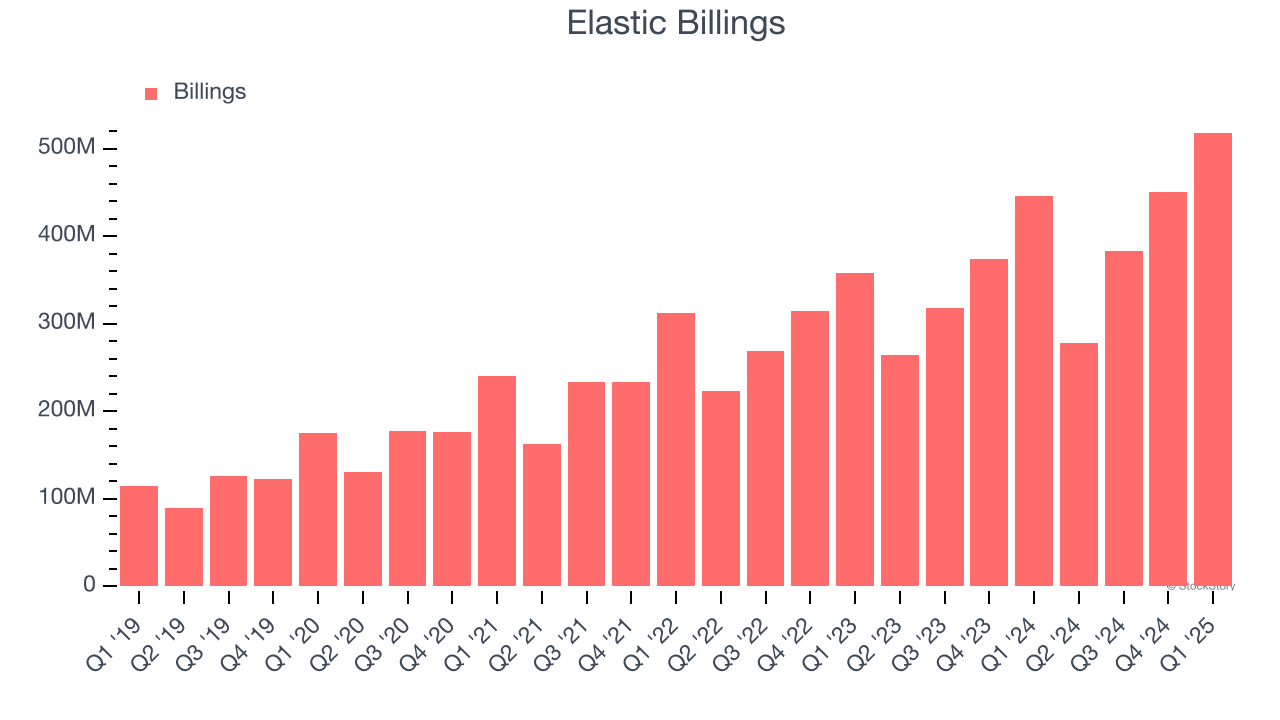
Search software company Elastic (NYSE: ESTC) reported Q1 CY2025 results topping the market’s revenue expectations, with sales up 16% year on year to $388.4 million. The company expects next quarter’s revenue to be around $397 million, close to analysts’ estimates. Its non-GAAP profit of $0.47 per share was 25.9% above analysts’ consensus estimates.
Is now the time to buy Elastic? Find out by accessing our full research report, it’s free.
Elastic (ESTC) Q1 CY2025 Highlights:
- Revenue: $388.4 million vs analyst estimates of $380.3 million (16% year-on-year growth, 2.1% beat)
- Adjusted EPS: $0.47 vs analyst estimates of $0.37 (25.9% beat)
- Adjusted Operating Income: $59.62 million vs analyst estimates of $51.15 million (15.3% margin, 16.6% beat)
- Revenue Guidance for Q2 CY2025 is $397 million at the midpoint, roughly in line with what analysts were expecting
- Adjusted EPS guidance for the upcoming financial year 2026 is $2.28 at the midpoint, beating analyst estimates by 9.4%
- Operating Margin: -3.1%, up from -13.6% in the same quarter last year
- Free Cash Flow Margin: 21.8%, similar to the previous quarter
- Customers: 21,500, up from 21,350 in the previous quarter
- Net Revenue Retention Rate: 112%, in line with the previous quarter
- Billings: $518.4 million at quarter end, up 16.1% year on year
- Market Capitalization: $9.64 billion
Company Overview
Started by Shay Banon as a search engine for his wife's growing list of recipes at Le Cordon Bleu cooking school in Paris, Elastic (NYSE: ESTC) helps companies integrate search into their products and monitor their cloud infrastructure.
Sales Growth
Reviewing a company’s long-term sales performance reveals insights into its quality. Any business can have short-term success, but a top-tier one grows for years. Over the last three years, Elastic grew its sales at a 19.8% compounded annual growth rate. Although this growth is acceptable on an absolute basis, it fell slightly short of our standards for the software sector, which enjoys a number of secular tailwinds.

This quarter, Elastic reported year-on-year revenue growth of 16%, and its $388.4 million of revenue exceeded Wall Street’s estimates by 2.1%. Company management is currently guiding for a 14.3% year-on-year increase in sales next quarter.
Looking further ahead, sell-side analysts expect revenue to grow 13.2% over the next 12 months, a deceleration versus the last three years. Still, this projection is noteworthy and implies the market is forecasting success for its products and services.
Software is eating the world and there is virtually no industry left that has been untouched by it. That drives increasing demand for tools helping software developers do their jobs, whether it be monitoring critical cloud infrastructure, integrating audio and video functionality, or ensuring smooth content streaming. Click here to access a free report on our 3 favorite stocks to play this generational megatrend.
Billings
Billings is a non-GAAP metric that is often called “cash revenue” because it shows how much money the company has collected from customers in a certain period. This is different from revenue, which must be recognized in pieces over the length of a contract.
Elastic’s billings punched in at $518.4 million in Q1, and over the last four quarters, its growth was solid as it averaged 15.6% year-on-year increases. This performance aligned with its total sales growth, indicating robust customer demand. The cash collected from customers also enhances liquidity and provides a solid foundation for future investments and growth. 
Customer Retention
One of the best parts about the software-as-a-service business model (and a reason why they trade at high valuation multiples) is that customers typically spend more on a company’s products and services over time.
Elastic’s net revenue retention rate, a key performance metric measuring how much money existing customers from a year ago are spending today, was 112% in Q1. This means Elastic would’ve grown its revenue by 12% even if it didn’t win any new customers over the last 12 months.

Elastic has a good net retention rate, proving that customers are satisfied with its software and getting more value from it over time, which is always great to see.
Key Takeaways from Elastic’s Q1 Results
We were impressed by Elastic’s strong growth in customers this quarter. We were also glad its full-year EPS guidance trumped Wall Street’s estimates. On the other hand, its full-year revenue guidance slightly missed and its revenue guidance for next year suggests a slowdown in demand. Overall, this print was mixed. Investors were likely hoping for more, and shares traded down 11.1% to $81.75 immediately following the results.
Is Elastic an attractive investment opportunity right now? What happened in the latest quarter matters, but not as much as longer-term business quality and valuation, when deciding whether to invest in this stock. We cover that in our actionable full research report which you can read here, it’s free.







